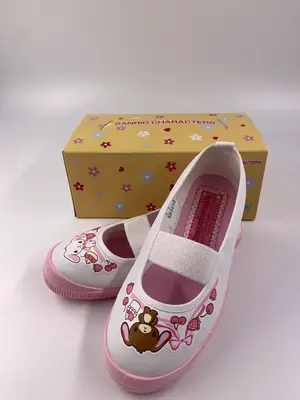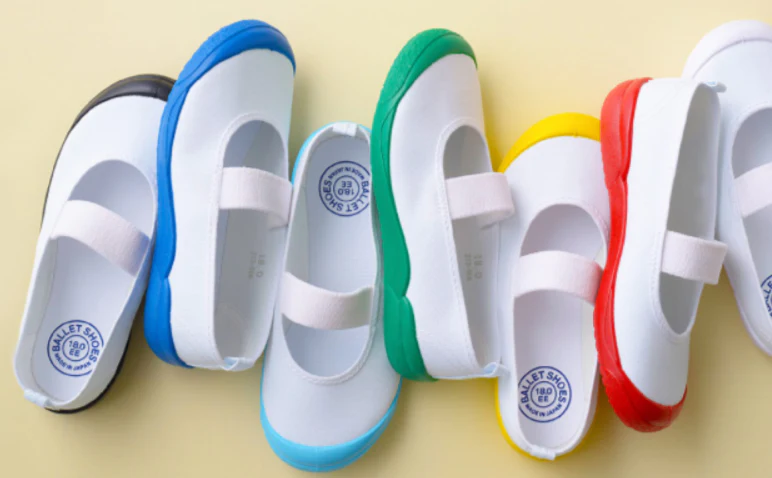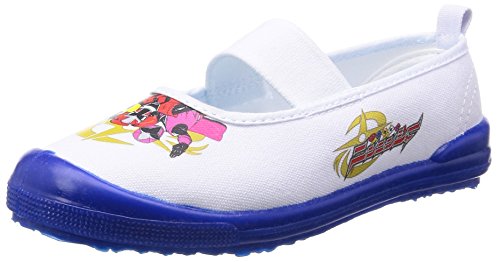Uwabaki Chronicles: Bridging Past and Present in Japanese Footwear
This comprehensive series delves into the world of Uwabaki, the Japanese indoor shoes with rich cultural roots. From its historical origins and traditional significance to its contemporary applications, the articles cover Uwabaki's design, materials, and cultural importance. Discover how these indoor shoes symbolize respect, cleanliness, and harmony in Japanese society, and learn practical tips for caring for Uwabaki to ensure longevity and cultural preservation in modern contexts.
Cultural Significance and Contemporary Applications

Uwabaki, a term deeply rooted in Japanese culture, represents more than just a pair of indoor shoes. Translated as "indoor shoes" or "slippers," Uwabaki carries a rich cultural significance and practical utility in various settings.
"Uwabaki" (うわばき or 室履き) is a Japanese term that translates to "indoor shoes" or "slippers." The word is a combination of "uwa" (室), meaning "room," and "baki" (履き), meaning "footwear" or "shoes." Together, "Uwabaki" refers to the special shoes or slippers that are worn indoors, particularly in homes, schools, traditional inns (ryokans), and various public places in Japan.
The cultural practice of wearing Uwabaki is deeply rooted in the Japanese tradition of removing outdoor shoes when entering a home or certain indoor spaces. The use of Uwabaki helps maintain cleanliness inside living spaces and is a symbolic gesture of transitioning from the external world to a more private, respectful, and controlled environment. This practice is common in Japanese schools, where students change into Uwabaki upon entering the school building, as well as in other places where cleanliness and respect for the indoor environment are emphasized.
Historical Origins
The concept of Uwabaki has its roots in the traditional Japanese custom of removing outdoor shoes upon entering a home or certain indoor spaces. This practice stems from a long-standing cultural emphasis on cleanliness, respect, and harmony with one's surroundings. Uwabaki, in its early form, served as a way to keep indoor spaces clean and symbolized a transition from the external world to the more private and sacred interior.
Designs and Materials
The design and material of Uwabaki are carefully crafted to align with its intended purpose of providing comfort, cleanliness, and safety indoors. Here are some key features of the design and materials commonly used for Uwabaki:
Design:
Slip-on Style:
- Uwabaki typically adopts a slip-on design for ease of use. This makes it convenient for individuals to quickly put on and take off the shoes when transitioning between indoor and outdoor spaces.
Low Cut:
- The majority of Uwabaki designs are low-cut, ensuring easy mobility and comfort. This design also facilitates ventilation, preventing the feet from becoming too warm.
Non-Slip Soles:
- One of the essential features of Uwabaki is the non-slip sole. This is crucial for ensuring stability and safety, especially on smooth indoor surfaces. The non-slip design helps prevent accidents and promotes a secure walking experience.
Lightweight:
- Uwabaki is designed to be lightweight to enhance comfort during indoor activities. The emphasis is on providing a relaxed and unencumbered feel for the wearer.
Neutral Colors and Simple Patterns:
- While some Uwabaki may have decorative elements, the overall design often leans towards simplicity. Neutral colors and subtle patterns are common, contributing to a clean and unobtrusive aesthetic.

Materials:
1. Soft Fabrics:
- Uwabaki is frequently made from soft and breathable materials such as cloth or fabric. This enhances comfort and allows for ventilation, preventing the feet from feeling overly hot.
2. Foam or Cushioned Insoles:
- Many Uwabaki designs incorporate foam or cushioned insoles to provide additional comfort and support during extended periods of wear. This is particularly beneficial for environments like schools or workplaces where individuals may be on their feet for extended periods.
3. Washable Materials:
- Given the emphasis on cleanliness, some Uwabaki are made from materials that are easily washable. This ensures that they can be regularly cleaned to maintain hygiene.
4. Durable Construction:
- While Uwabaki may have a lightweight feel, they are often designed with durability in mind. Reinforced seams and sturdy construction contribute to the longevity of the shoes, especially in settings where they may be subjected to regular use.
5. Variety in Materials:
- Uwabaki can be found in a variety of materials to suit different preferences and use cases. Common materials include cotton, polyester, and synthetic fabrics.
The combination of these design elements and materials results in Uwabaki that not only serve a practical purpose in maintaining cleanliness indoors but also prioritize the comfort and safety of the wearer. The cultural and functional aspects of Uwabaki make them a unique and essential part of Japanese daily life.
Cultural Significance
1. Respect and Politeness:
- Wearing Uwabaki is a sign of respect and politeness. By changing into indoor shoes, individuals demonstrate an awareness of their impact on the cleanliness of the indoor environment, showing consideration for others and the space they are entering.
2. Maintaining Cleanliness:
- Uwabaki plays a crucial role in maintaining cleanliness within homes, schools, and other indoor spaces. The practice of removing outdoor shoes and switching to indoor shoes helps prevent the introduction of dirt and contaminants from outside, contributing to a clean and hygienic living environment.
3. Symbol of Transition:
- Changing into Uwabaki marks a symbolic transition from the external, often bustling, and potentially chaotic world to the more controlled and private space indoors. This ritual is a subtle but powerful reminder of the boundaries between public and private spheres.
4. Discipline and Order in Education:
- In Japanese schools, the use of Uwabaki is deeply ingrained in the education system. Students changing into indoor shoes upon entering the school building symbolizes a shift from the casual and often dynamic outdoor environment to the disciplined and focused atmosphere of the classroom.
5. Cultural Identity:
- Uwabaki represents a cultural identity deeply rooted in Japanese traditions. The practice of using indoor shoes is not just a functional necessity; it reflects a cultural ethos that places importance on cleanliness, order, and respect for shared spaces.
6. Connection to Traditional Architecture:
- The tradition of removing outdoor shoes and using indoor footwear is linked to the architectural design of traditional Japanese homes, where the floor is often covered with tatami mats. Tatami mats are sensitive to damage from outdoor shoes, and using Uwabaki helps preserve the integrity of these traditional flooring materials.
7. Fostering a Sense of Community:
- The shared practice of wearing Uwabaki in certain settings fosters a sense of community and shared responsibility. Whether in schools, traditional inns, or other public spaces, the uniform use of indoor shoes contributes to a sense of unity and shared cultural norms.
8. Hygiene in Public Spaces:
- In public spaces like traditional inns (ryokans), temples, and certain businesses, Uwabaki serves as a hygienic measure. Visitors changing into indoor shoes helps keep these spaces clean and contributes to the overall maintenance of a welcoming and respectful atmosphere.
9. Adaptation to Modern Lifestyles:
- While rooted in tradition, the use of Uwabaki has adapted to modern lifestyles. Many workplaces and contemporary homes in Japan continue the practice, showcasing a harmonious blend of tradition and practicality.
Contemporary Applications
In contemporary Japan, the traditional practice of using Uwabaki has evolved and found new applications in various settings, reflecting a harmonious blend of tradition and modernity. Here are some of the contemporary applications of Uwabaki:
1. Workplaces:
- Many Japanese workplaces, especially those with a focus on cleanliness and a relaxed atmosphere, adopt the use of Uwabaki. Employees change into indoor shoes upon entering the office, promoting a comfortable and clean working environment. This practice helps maintain hygiene and fosters a sense of discipline and order.
2. Schools and Educational Institutions:
- The use of Uwabaki remains a standard practice in Japanese schools. Students change into indoor shoes upon entering the school premises, emphasizing a sense of discipline, cleanliness, and respect for the educational environment.
3. Healthcare Settings:
- In healthcare facilities and clinics, where hygiene is of utmost importance, Uwabaki may be provided for both staff and visitors. This helps minimize the transfer of contaminants and contributes to the overall cleanliness and safety of the healthcare environment.
4. Hotels and Accommodations:
- Traditional inns (ryokans) and modern hotels often provide Uwabaki for guests. This practice ensures that indoor spaces remain clean and that guests can comfortably navigate shared areas without bringing in dirt from outside.
5. Cultural and Public Spaces:
- Certain cultural and public spaces, such as museums, art galleries, and temples, may implement the use of Uwabaki. This helps preserve the cleanliness of the space and contributes to the overall visitor experience by maintaining a serene and orderly atmosphere.
6. Private Residences:
- In contemporary Japanese homes, particularly those with a focus on cleanliness and preserving flooring materials, it is not uncommon for residents to have a set of indoor shoes, including Uwabaki. This practice helps protect floors from outdoor contaminants and promotes a clean and comfortable living environment.
7. Events and Gatherings:
- In some cases, during private events or gatherings held in homes or rented spaces, hosts may encourage guests to wear Uwabaki to maintain the cleanliness of indoor areas. This practice is a thoughtful way to balance hospitality with the preservation of indoor spaces.
8. Hospitality and Service Industries:
- Restaurants, cafes, and other establishments in the hospitality and service industries may implement the use of Uwabaki for staff, especially in kitchen and dining areas. This contributes to a hygienic and professional working environment.
9. Adoption in Other Cultures:
- The concept of using indoor shoes is not limited to Japan. In some multicultural and international settings, individuals and institutions may adopt similar practices as a way to promote cleanliness and respect for shared indoor spaces.
10. Home Hygiene Practices:
- In modern Japanese homes, especially those with young children or pets, Uwabaki can be a practical solution to keep living spaces clean. This is particularly relevant in apartments and houses with a mix of traditional and Western-style flooring.
Caring for Uwabaki
Caring for Uwabaki is essential to ensure their longevity, maintain cleanliness, and promote a hygienic indoor environment.
1. Regular Cleaning:
- Dust Removal: Shake out Uwabaki regularly to remove dust and debris. This prevents particles from accumulating on the shoes and being carried into indoor spaces.
2. Material-Specific Care:
- Follow Manufacturer Guidelines: Pay attention to the care instructions provided by the manufacturer. Different materials may have specific cleaning recommendations, and following them ensures that you don't inadvertently damage the Uwabaki.
3. Handwashing or Machine Washing:
- Handwashing: For Uwabaki made of fabric or cloth, handwashing is often suitable. Use a mild detergent and lukewarm water. Gently scrub any stained areas and allow them to air dry completely.
- Machine Washing: Some Uwabaki, particularly those with removable insoles, may be machine washable. Again, follow the manufacturer's instructions, and use a gentle cycle with mild detergent.
4. Insole Care:
- Remove Insoles: If your Uwabaki have removable insoles, take them out regularly for separate cleaning. This helps eliminate odors and ensures that both the insoles and the shoes remain fresh.
- Replace Insoles: If the insoles become worn or lose their cushioning, consider replacing them. This can enhance comfort and extend the lifespan of your Uwabaki.
5. Sun-Drying:
- Air Dry: After cleaning, allow Uwabaki to air dry completely. Avoid using direct heat sources such as radiators or dryers, as excessive heat can damage certain materials.
- Sun-Drying: If the weather permits, placing Uwabaki in direct sunlight for a short period can help eliminate odors and bacteria. However, be cautious not to expose them to prolonged sunlight, as it may cause fading or damage to certain materials.
6. Rotation and Alternatives:
- Rotate Pairs: If you have multiple pairs of Uwabaki, rotate their use. This allows each pair to air out and reduces the accumulation of moisture and odors.
- Have Alternatives: Consider having alternative indoor shoes to further extend the lifespan of your Uwabaki. Having a few pairs in rotation can be especially beneficial in high-use environments.
7. Store Properly:
- Designated Storage: When not in use, store Uwabaki in a designated area. This helps maintain their shape and prevents them from getting damaged or flattened.
8. Address Stains Promptly:
- Immediate Attention: If you notice stains or spills, address them promptly. Blotting or gently wiping the affected area with a damp cloth can prevent stains from setting.
9. Respect Usage Environments:
- Use as Intended: Respect the intended use of Uwabaki. Avoid wearing them outdoors, as they are designed for indoor use. Using them outdoors can expose them to unnecessary wear and tear.
By following these care tips, you can ensure that your Uwabaki remain in good condition, contribute to a clean indoor environment, and provide you with comfort and functionality for an extended period. Regular maintenance not only preserves the shoes but also upholds the cultural values associated with their use.

FAQ
- Why do Japanese wear Uwabaki?
- What does Uwabaki mean in Japanese?
- Why do Japanese students wear different shoes in school?
- What is slipper in Japan?
Why do Japanese wear Uwabaki?
- Japanese wear Uwabaki for cultural and practical reasons. Uwabaki, translating to "indoor shoes" or "slippers," symbolizes respect for cleanliness and a transition from the outdoor world to indoor spaces. The practice prevents dirt from outside being brought indoors, maintaining a hygienic and orderly environment. Uwabaki is commonly worn in homes, schools, and various public places in Japan.
What does Uwabaki mean in Japanese?
- "Uwabaki" (室履き) in Japanese translates to "indoor shoes" or "slippers." The term is a combination of "uwa" (室), meaning "room," and "baki" (履き), meaning "footwear" or "shoes." Uwabaki represents the special shoes designed for indoor use, emphasizing cleanliness and respect for indoor spaces in Japanese culture.
Why do Japanese students wear different shoes in school?
- Japanese students wear different shoes, often Uwabaki, in school as part of a cultural practice rooted in respect and cleanliness. Changing into indoor shoes upon entering the school building signifies a shift from the dynamic outdoor environment to the disciplined and focused atmosphere of the classroom. This practice instills a sense of responsibility, cleanliness, and order among students from a young age.
What is a slipper in Japan?
- In Japan, the term "slipper" generally refers to indoor footwear, and it can include various types of indoor shoes, such as Uwabaki. Slippers are worn to maintain cleanliness indoors, and the choice of footwear depends on the cultural context and the specific setting. Whether in homes, traditional inns, schools, or other public places, the use of slippers or indoor shoes is a common practice to uphold cleanliness and cultural norms.
Uwabaki, with its deep cultural roots and practical applications, exemplifies the harmonious blend of tradition and modernity in Japanese society. Beyond being a simple pair of indoor shoes, Uwabaki symbolizes respect, cleanliness, and a connection to the rich cultural heritage of Japan. As we continue to appreciate the global significance of cultural practices, understanding the essence of Uwabaki provides a fascinating glimpse into the intricate tapestry of Japanese traditions.



